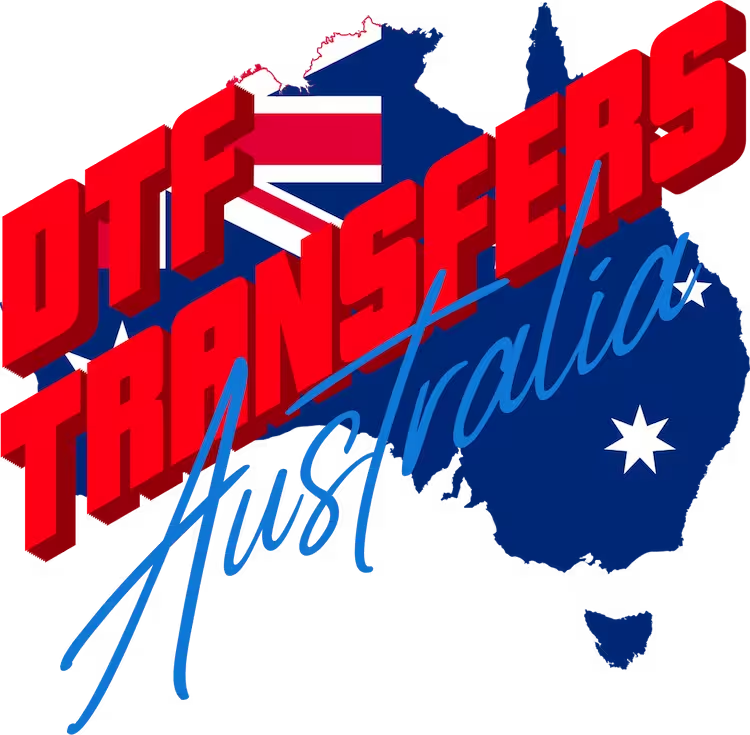All Posts, Helpful Info, Start a T-Shirt Business
Navigating T-Shirt Design: How to Avoid Copyright Issues
Ever stared at a blank t-shirt, your mind buzzing with killer designs? Then you’ve likely been where I am now. Your creative spirit is alive and kicking, but so too are the legal minefields.
You see, just as our imaginations run wild with graphics and fonts dancing around in our heads, there’s something we often forget: copyright law. The invisible shackles that could turn an artistic venture into a potential nightmare. And who wants to be known as ‘that’ designer – the one ripping off others?
No-one! That’s why this journey of ours takes us through some essential steps on avoiding copyright issues when designing tees – from understanding automatic protections to navigating licensing agreements; using public domain resources or grappling with quotes and trademarks; even tackling those tricky images of famous faces.
We’re not talking about dry legalese here – no sir! We’re diving into the heart of it all, discussing topics that matter. Getting down to brass tacks and delivering insights you can really use.
Table Of Contents:
- Understanding Copyright in the T-Shirt Industry
- Navigating Licensing Agreements and Fees
- Utilising Public Domain and Creative Commons Resources
- Using Royalty-Free Images
- Images That Have Entered the Public Domain
- The Complexities of Using Quotes and Trademarks on T-Shirts
- The Risks of Copying T-Shirt Designs
- The Legalities of Using Famous People or Copyrighted Elements on Shirts
- Importance of Authenticity in T-Shirt Designs
- Avoiding Copyright Issues on a Print on Demand Website
- Exploring AI and Copyright Laws in T-Shirt Design
- Tips for Staying on the Right Side of Copyright Laws
- FAQs in Relation to How to Avoid Copyright Issues With T-Shirt Designs
- Conclusion
Understanding Copyright in the T-Shirt Industry
If you’re into t-shirt design, it’s vital to understand copyright laws. It can seem daunting, but let me tell you – it’s not as scary as accidentally using a copyrighted image and facing legal action.
The Automatic Nature of Copyright Protection
In Australia, copyright protection kicks in automatically when an original work is created. This means if someone doodles on a napkin during lunch break – boom. That doodle is protected by copyright.
But don’t start scanning all your mealtime masterpieces just yet. For businesses like DTF Transfers Australia that produce custom transfers for t-shirts, this law serves as both shield and sword.

What Constitutes Copyright Infringement?
Avoiding copyright issues involves more than steering clear of Mickey Mouse prints without Disney’s consent. It comprises any production or dissemination of a protected work without authorisation from the creator or the owner of the intellectual property.
- Stat 1:This isn’t just limited to exact replicas; even substantially similar designs could land you in hot water.
- Stat 2: In fact, courts have found infringement where only small portions were copied.
- Stat 3: Bear in mind though: Ideas cannot be copyrighted – only their tangible expression.
- Stat 4: Last year alone saw several high-profile cases involving clothing brands being sued for copying unique graphic elements.
Copied slogans? Hot water awaits (unless it falls under fair use). Famous faces on tees? Ensure you’ve got the ok from those who own the rights. So tread carefully and respect those copyrights.
Navigating Licensing Agreements and Fees
Using copyrighted materials in your t-shirt designs isn’t as simple as copying and pasting. It involves getting permission from the copyright owner, often through a licensing agreement.
Understanding Licensing Agreements
A licensing arrangement is essentially a binding legal document between the licensee and the copyright holder (the licensor). This gives you rights to use their work under specific conditions. The conditions of these pacts can differ significantly, but generally involve details such as how long the material is to be utilised for, where it may be used and what cost is associated.
Fees for using copyrighted works also differ widely. They’re determined by factors such as the popularity of the work or artist, extent of usage required (like global vs local), type of merchandise being produced etc. Copyright Agency Australia provides more insights on this matter.
Licensing fees may seem steep at times. But think about it like this – would you rather pay upfront for permissions or risk hefty fines later? Moreover, ‘borrowing’, without proper consent could lead to reputational damage which might cost more than just money.
- Royalty-based licenses: This is an arrangement where payment is based on sales volume; higher sales mean higher payments to licensors.
- Flat fee licenses: In contrast here one-time lump sum payment covers all future uses within specified parameters with no extra costs tied to performance or reach of your product.
Beyond costs though, there’s another aspect worth considering: exclusivity. If a licensor grants you exclusive rights, they can’t let anyone else use their work in the same way during your agreement period. This might be more expensive but could give you an edge over competitors.
Navigating licensing agreements and fees is complex, so consider seeking professional help when dealing with them. Remember: respecting copyright laws isn’t just about avoiding legal trouble—it’s also a matter of ethics and reputation.
Knowing how to handle licensing agreements is crucial if you’re using copyrighted material in your t-shirt designs. It’s not just about copying and pasting – you need the copyright owner’s permission, typically through a license agreement. These might cost a bit, but paying upfront beats risking fines or reputation damage down the line. Remember, different licenses have varying costs and terms.
Utilising Public Domain and Creative Commons Resources
The world of public domain works is like a treasure chest waiting to be opened. It’s filled with creations free from copyright restrictions, letting you use them in your t-shirt designs without fear.
Public domain materials, including art, photographs and texts, that have either had their copyrights expire or were never eligible for copyright protection in the first place. For instance, Shakespeare’s plays are as open to use as that catchy nursery rhyme we all grew up with.
But remember. Just because an item is old doesn’t automatically make it public domain. You need to check its status carefully before using it on your tees.
Creative Commons: A Goldmine of Licensed Materials
If you’re looking for more modern content though – enter Creative Commons (CC). The CC universe gives creators a way to share their work under flexible licensing terms. Like visiting different cities on a global tour – each license has unique attractions.

- CC0: This licence allows unrestricted usage just like public domain items.
- Attribution (BY):You can adapt or build upon the original work but must give credit where it’s due.
- NoDerivatives (ND): This means no remixing; the original creation needs to remain unchanged if used publicly.
To find these resources visit platforms such as CreativeCommons.org amongst others. It’s like a never-ending music festival – you’ll always find something that strikes the right chord.
Just ‘cos it’s free doesn’t mean you can do whatever you want with it – be sure to read the licence carefully before using Creative Commons material for your t-shirt designs. Always check the licensing terms carefully before using any Creative Commons work in your t-shirt designs.
Using Royalty-Free Images
If you’re in the business of screen printing or running a small print shop, using Direct to Film (DTF) transfers can be a game-changer. But when it comes to sourcing images for your T-shirt designs, one area that requires careful navigation is copyright law. One solution might seem simple: use royalty-free images. However, there are still some rules and regulations around this that need consideration.
Royalty-Free Doesn’t Mean Free of Restrictions
Royalty-free images aren’t necessarily free from restrictions. The term “royalty-free” simply means that once the image is purchased or downloaded under its license agreement, no further royalties need to be paid for each subsequent usage. It doesn’t mean these images can be used indiscriminately without respecting their licensing terms which often include limitations on commercial use and modification.
Finding Reliable Sources for Royalty-Free Images
You should only source your royalty-free images from reputable platforms like Unsplash, Pixelbay. A few more sites that should be used with a little caution are, Hi Clipart and Anyrgb. These sites provide clear guidelines about how their photos and images can be used commercially.
Always Read the Fine Print
Regardless of where you source your images, always read the licensing agreement carefully. Some royalty-free licenses may prohibit commercial use or require attribution to the original artist. If in doubt, it’s best to consult with a legal professional.
Create Your Own Designs
If all else fails and copyright restrictions are too daunting, consider creating your own designs. This ensures that you won’t run into any copyright issues and can add a unique touch to your DTF transfers.
In essence, while using royalty-free images can be an excellent resource for T-shirt design ideas, it is crucial to understand their usage limitations to avoid potential copyright infringements.
Images That Have Entered the Public Domain
When it comes to creating unique and captivating t-shirt designs, using images that have entered the public domain can be a valuable resource. These are works whose exclusive intellectual property rights have expired copyright, have been forfeited, or are inapplicable. As such, they can be used freely without worrying about copyright infringement.
Understanding Public Domain Images
A public domain image is one that is not protected by copyright law because its copyright has expired or never existed in the first place. This means you’re free to use these images for your t-shirt designs without seeking permission from anyone. However, keep in mind that while an image may be considered public domain in one country, it might not necessarily hold true elsewhere due to differing laws on copyrights. A good example of this is is (at the time of writing) Australian law for public domain is 75 years, but in hte US it is 100 years. So Riverboat Mickey might be OK if you can restrict it to Australia only, but it is seen in ht eUS and you are in hot water.
Finding Public Domain Images
The internet provides a wealth of resources where you can find high-quality public domain images suitable for your custom printed t-shirt transfers. Websites like Pixabay, Unsplash, and PublicDomainArchive offer thousands of stunning visuals which you could incorporate into your designs.
- Pixabay: This platform offers over 1 million high quality photos shared by their generous community of photographers with no attribution required as all pictures are released under Creative Commons CC0.
- Unsplash: An excellent source for high-resolution photos contributed by talented creatives worldwide also available under Creative Commons Zero license allowing commercial usage without permission or credit.
- PublicDomainArchive: A comprehensive collection of vintage and modern public domain images. No copyright restrictions, perfect for your t-shirt designs.
Respecting the Rules of Public Domain Images
While using public domain images provides a lot of freedom, it’s essential to respect the rules that come with them. Always verify if an image is truly in the public domain before you use it. Also, be aware that while an image may be free from copyright restrictions, other aspects such as trademarks or privacy rights might still apply especially when identifiable people are depicted in these photos.
In essence, leveraging on public domain images can save you time and legal troubles while also providing unique visuals for your DTF transfers business or hobbyist projects. Remember to always do due diligence in ensuring these images are indeed free from any encumbrances before usage.
The Complexities of Using Quotes and Trademarks on T-Shirts
Using quotes or trademarks in t-shirt designs can be a tricky business. There’s more to it than simply picking a cool quote from your favourite film, slapping it onto a shirt design, and watching the sales roll in.
Australian intellectual property laws are pretty clear: unauthorized use of copyrighted material is illegal. This includes most movie quotes, famous sayings, logos, and other elements associated with established brands or personalities.
A key stat worth noting here: 12% of all t-shirts sold worldwide feature some form of printed quote or slogan. But not every one of these is necessarily legal.
Navigating The Legal Landscape Of Quotes And Trademarks On Shirts
To avoid running afoul of copyright law while using such materials for your shirts – especially if you’re doing Direct-to-Film (DTF) transfers – requires careful navigation. To do this right needs two main things:
- An understanding that not all quotes or symbols are free game – even if they seem commonplace,
- And when in doubt about any element’s copyright status? Always seek professional advice before printing anything potentially contentious on your tees.
Failing to respect these guidelines could result in hefty fines – something no budding entrepreneur wants hanging over their head.
The Risks of Copying T-Shirt Designs
You might assume that taking a nice pic from the web or reproducing someone else’s design for a t-shirt is not an issue. But hold on, there are risks attached.
Mimicking other people’s designs without their permission can lead to copyright infringement claims. Copyright law in Australia and around the world protects original artworks, including those nifty t-shirt prints.
Court Battles and Financial Penalties
Imagine ending up in court for selling a handful of tees with an unlicensed cartoon character printed on them. That’s not just hypothetical – businesses have faced lawsuits for this very reason.
If found guilty, they had to pay hefty penalties or even cease operations altogether. Not so cool now, right?
Damaging Your Reputation
Beyond legal troubles, infringing copyrights could harm your business reputation too. Customers value authenticity and tend to shun brands associated with unethical practices like plagiarism.
In fact, according to a 2023 study by Facebook, 53% consumers said they became more conscious about the brand values that influence their purchasing decisions over time.
Affecting Customer Trust
Earning trust takes years but losing it? Just moments. Infringing upon someone else’s work sends out negative signals about your brand, which can turn customers away.
You don’t wish to be seen as the individual who pilfers designs when you are a proprietor of a t-shirt business. You want to be celebrated for your creativity and originality.

The Bottom Line
To avoid copyright issues, make sure that every design you print is either yours or properly licensed from its rightful owner. This will keep both legal troubles and customer dissatisfaction at bay.
The Legalities of Using Famous People or Copyrighted Elements on Shirts
Slapping a famous face or a cool logo onto your t-shirt designs might seem like an easy way to grab attention. But, this could land you in hot water legally.
Firstly, it’s crucial to understand that using the likeness of celebrities without permission is likely to infringe upon their personality rights. These laws vary around the globe, but generally speaking, individuals have the right to control how their image is used commercially. So before you start printing those shirts with Beyoncé’s face on them, think twice.
If you think a creator’s death means that there is no harm in using their likeness, think again, their estate can still own their likeness, and in some cases may have sold the rights to a large company, that will religiously chase down offenders using the images or even creative art of the star, David Bowie is a great example of this. Some of these companies will use reverse image search to find any infriging images or images that are close to the likness and don’t have agreements in place between the business owner and the rights holder.
Film Quotes and Album Covers
Moving onto movie quotes and album covers – they’re not as free game as one might assume. While some short phrases can’t be copyrighted due to lack of originality (like “Let’s get ready to rumble”), others are protected by copyright law because they come from works that meet the threshold for protection under copyright law.
In other words: don’t use Han Solo’s “I’ve got a bad feeling about this” unless you want Disney lawyers knocking at your door.
Logo Dilemma?
If logos tickle your fancy more than celebrity faces or film quotes do – beware. Logos often fall under trademark laws rather than copyrights which makes using them without authorisation a risky business indeed. If you absolutely must include that iconic swoosh or bitten apple, get in touch with the company first to see if they’re open to licensing their trademark for your t-shirt design. But be aware Nike and Apple are highly unlikely to allow you to use their logos.
In the final analysis, having a distinct and genuine style not only keeps you out of trouble legally but also makes your designs more interesting and attractive. Remember: creativity trumps copycats.
Importance of Authenticity in T-Shirt Designs
In the highly competitive sphere of t-shirt design, being genuine is essential. It’s not just about standing out from the crowd but also safeguarding your business against copyright issues. Let’s delve into why this matters.
Your designs reflect your brand’s identity and originality. They are a form of communication with your customers that conveys creativity, values, and personality. According to Smashing Magazine, 76% of consumers perceive uniqueness as an essential element when choosing which brands they like.
This brings us to another point: customer trust. If you’re found infringing on someone else’s copyright, it can severely damage your reputation. Customers value honesty and integrity; they want to support businesses that respect other creators’ rights.

- An authentic design speaks volumes about who you are as a brand – it tells stories only you can tell.
- Cutting corners by using copied designs may lead to legal trouble and lost trust from customers – something no business wants or needs.
- You’ll gain more recognition for unique designs than rehashed ones – people appreciate innovation over imitation any day.
We’ve all heard “imitation is the sincerest form of flattery”, but let me add my two cents here: there’s a fine line between being inspired and infringing copyright. So, tread carefully.
Staying true to your creative vision not only avoids legal issues but also builds customer loyalty – people are more likely to stick with brands they believe in (Journal of Consumer Research). A unique design can become iconic, like the Rolling Stones’ “Tongue and Lip Design”, driving more sales.
Avoiding Copyright Issues on a Print on Demand Website
In the world of custom T-shirt printing, creativity is king. However, it’s essential to remember that not all designs can be used freely due to copyright laws. When using a website for your business to allow them to upload images and create their own designs, you must understand how to avoid potential copyright issues.
Understanding Copyright Laws
The first step in avoiding copyright problems is understanding what they are. In simple terms, if someone creates an original piece of work – whether it’s an image, text or music – they automatically own the rights to that creation under Australian law and international agreements such as the Berne Convention for the Protection of Literary and Artistic Works.
User Responsibility and Your Disclaimer
To protect yourself from potential lawsuits when running a print-on-demand website offering custom T-shirt, ensure customers know their responsibilities regarding copyrighted materials. A clear disclaimer should state that customers assume responsibility for ensuring any images used do not infringe upon existing copyrights.
By uploading images for use in our online custom t-shirt designer,
you affirm ownership or have obtained proper permissions
to use these graphics, logos or quotes.
Educate Your Customers
Besides having a disclaimer, educating your customers about intellectual property rights can go a long way towards preventing unintentional infringement. You could provide resources like links to articles like this one that explain copyright basics, so users understand why they need permission before using certain designs.
Exploring AI and Copyright Laws in T-Shirt Design
In the ever-evolving world of design, Artificial Intelligence (AI) has become a significant game-changer. This is particularly true for screen printers and small print shops using Direct to Film (DTF) transfers, as well as hobbyists seeking unique t-shirt transfers. However, with this exciting frontier comes new challenges concerning copyright laws.
The Intersection of AI and Copyright Law
A crucial aspect to understand about AI and copyright law is that it’s still largely uncharted territory. While there are established regulations regarding human-created designs, how these rules apply to AI-generated images remains ambiguous. Therefore, when creating t-shirt designs through AI technology such as Leonardo, it’s essential to tread carefully.
Navigating Potential Copyright Issues with AI Designs
- Familiarise yourself with basic copyright principles: Understanding the fundamentals of intellectual property rights can provide some guidance on what may constitute infringement even within the realm of AI-produced content.
- Use original training data: If you’re utilising machine learning algorithms for your designs make sure your training data – i.e., the images or patterns used by the algorithm to generate new content – doesn’t infringe upon existing copyrights.
- Safeguard against potential issues: As far as possible use licensed resources or open-source databases for your initial inputs into an algorithm; this could help protect you from inadvertently violating someone else’s rights while generating your own creative outputs.
- Image Generation with Safeguards, Use a Image generation tool that has safeguards in place like Dall.e 3 while they might not be perfect it can only help.
Treading Carefully in Uncharted Territory
The intersection between AI and copyright law is still a grey area. However, by taking the right precautions and staying informed about ongoing legal developments in this field, you can continue to create exciting t-shirt designs while avoiding potential pitfalls. Remember, it’s not just about creating amazing prints with DTF Transfers Australia; it’s also about respecting intellectual property rights.
Some issues will be easily spotted, if you create a charter from Star Wars using an AI prompt, it will never be OK to use for commercial purposes without legal permission. No matter how much the creative work is your own, the base charter does not belong to you.
A US Finding
A US Court recently found that you cannot copyright a image that was created with a prompt, but there are already cases challenging this, while it would be difficult to say that an image you created with a free tool and is public available on the website for all to see and use, in the furture it might be found that you do have protection if you use a license on the software and trained the software in your own style, just be aware there are sure to be changes with this evolving field of image generation.
Tips for Staying on the Right Side of Copyright Laws
Running a successful t-shirt business is like driving on a busy highway. To keep things in check, it’s important to adhere to the rules. Let’s explore those crucial tips.
Conducting Proper Research and Updating Knowledge
To stay informed about copyright laws is akin to knowing traffic signs; they guide your journey and prevent mishaps. It’s vital to constantly update your knowledge about Australian Intellectual Property laws. These regulations can change, so keeping an eye out for updates helps avoid any unexpected detours.
Seeking Legal Advice When in Doubt
If you’re unsure whether or not something could infringe upon someone else’s rights, it pays off big time to get legal advice before making that turn at the crossroads. (I am no lawyer and all of this information is to help you make a good decision, but it is important to always consult a legal professional when making important decisions.)
A lawyer specialised in intellectual property law will be able to steer you clear of potential infringements and ensure that your designs are unique yet lawful. Just as one wouldn’t take medical advice from their mechanic, don’t gamble with understanding complex copyright issues without legal professional help.
Documenting the Creative Process
The final tip we have for today revolves around documenting your creative process thoroughly — just like keeping records of vehicle maintenance checks ensures its longevity and saves us from unforeseen troubles down the line.
This isn’t merely an exercise in creativity, but also a crucial step to protect your business. It demonstrates that your work is original and helps if you ever need to prove it. So keep those sketchbooks handy and don’t be shy about noting down every little idea or inspiration. Keep dates on your work as an extra protection, if someone claims that they came up with the idea for a funny fishing T Shirt but you can prove you had the idea and used it years before them, well that makes it a lot easier to deal with.
Running a t-shirt business is like driving on a busy road – you need to know the rules. Keep your knowledge of copyright laws fresh, and don’t hesitate to seek legal advice if you’re unsure about potential infringements. Lastly, document every step of your creative process – it’s not just good practice but can also be crucial for protecting your designs.
FAQs in Relation to How to Avoid Copyright Issues With T-Shirt Designs
Do I need to copyright my t-shirt design?
No, your original t-shirt designs are automatically protected by copyright once they’re created. But for extra protection, register them.
How to make shirts without getting sued?
To avoid lawsuits, only use original artwork or licensed materials. Steer clear of copyrighted images and trademarks.
How do you avoid copyright in design?
Avoiding copyright issues is simple: create unique work from scratch. Don’t lift parts from other’s designs and always respect intellectual property rights.
Can I put a copyrighted image on a shirt for personal use?
Tread carefully. While it is highly unlikely that Disney will come after you for that one off T Shirt you created for yourself with a princess printed on it, using a copyrighted image can lead to legal trouble if shared publicly or sold later on.
Conclusion
I hope this has helped a little and we’re a little wiser. Wiser about how to avoid copyright issues with t-shirt designs.
We’ve discovered that automatic protections exist as soon as a design is created. We now know the intricacies of licensing agreements and fees – they can be friends or foes depending on our knowledge.
Using public domain resources? Now possible without legal headaches. And those quotes and trademarks – they’re no longer confusing us!
Famous faces or copyrighted elements, we’ve learned when it’s okay to use them and when it isn’t.
In the end, authenticity in our designs doesn’t just protect us from copyright infringement but also builds customer trust.



